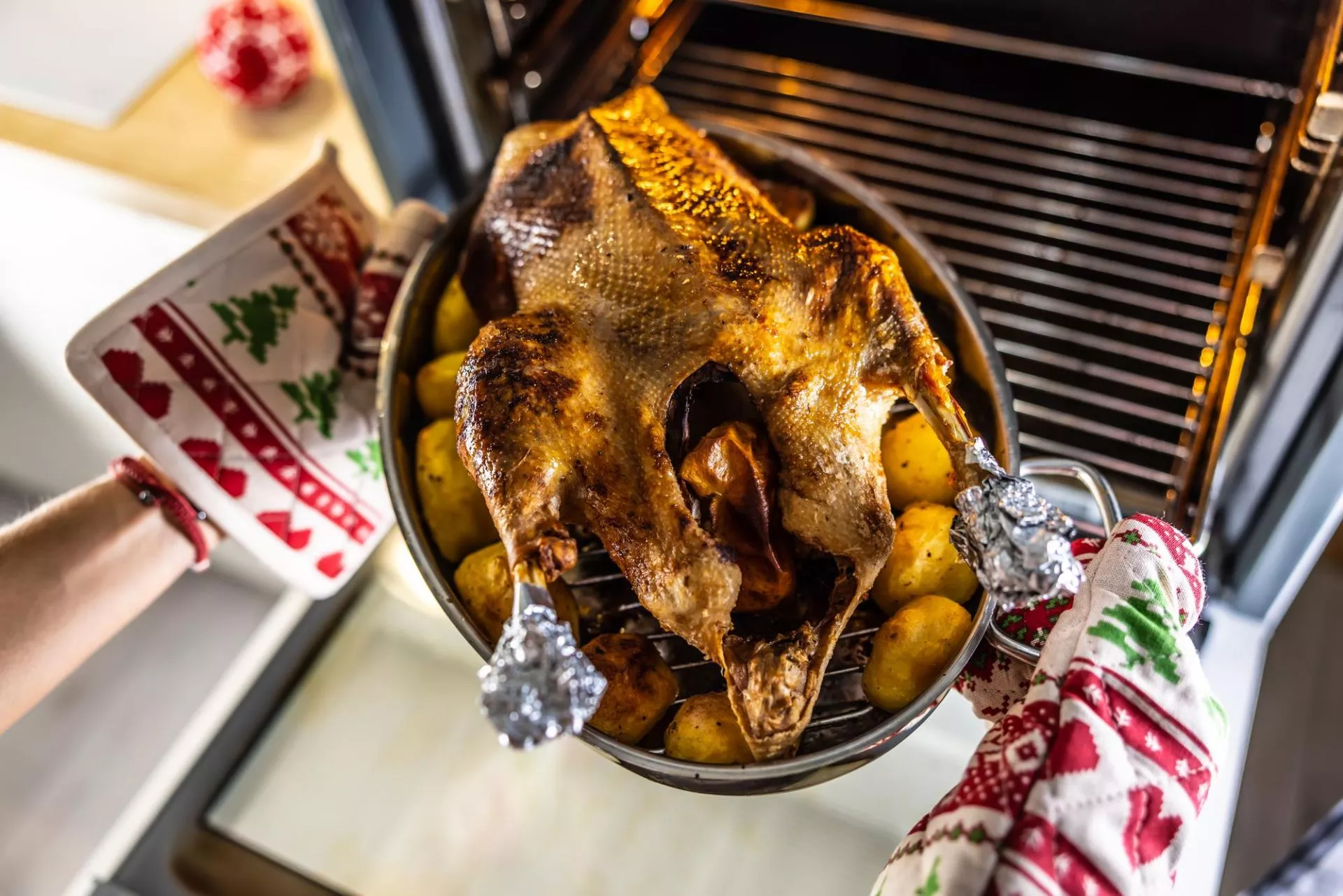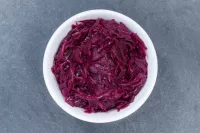Best Buying Tips
Our advice is to buy younger geese as these tend to be more tender and if possible go for an organic, free-range goose. If you are cooking for more than 4, buy two birds as this will guarantee adequate portions for everyone. Bear in mind that a 9-pound goose will feed about six guests. Or allow about 1.5 pounds per diner. Try and chat to your local butcher and ask what he thinks are the best examples for buying.
You'll be surprised how forthcoming a butcher can be when asked a few thoughtful questions about the shop's seasonal produce. Look carefully at the bird, check for nice off-white flesh, and avoid bruised-looking meat. The season for fresh goose is from about September to January but obviously frozen geese can be readily purchased throughout the year.
Preparation of a Whole Goose
- Always check for what the butcher has or has not prepared. Quite often, there will be a bag containing all the giblets that must be taken aside and kept for making gravy stock or other culinary uses.
- Remove any large parts of fat from inside the cavity, as these should be rendered down for roasting and basting the goose. There will quite likely be enough extra fat to put by for roast potatoes. To render the fat melt on gentle heat. Then strain and leave to cool.
- It's a good idea to use all parts of the goose, including the neck and gizzards to make an outstanding stock or gravy. The liver can be pan-fried and is delicious as a starter on toast.
- Prick the skin all over using the end of a sharp knife to ensure the fat is released efficiently and easily during roasting.
- One practical suggestion is to place the bird on a wire rack above a tin tray to allow for the generous amount of prized goose fat that will melt during the roasting. It is good to realise the potential for using what is a very tasty fat for many different recipes. So simply allow the fat to drain into the tray and keep for later. Goose fat will keep refrigerated for up to six months, so there is no need to waste any of this!
Glazing
One consideration for extra flavour is to make a glaze and baste the goose throughout the cooking. Orange juice, honey and spices can be used to glaze with and will elevate a great dish into a meal worth remembering! If you don't want any bother with glazing, then simply baste with the natural fat of the bird as this is already full of wonderful flavour.
Taking Stock!
While your goose is cooking, why not take full advantage and use the liver, heart, neck and giblets to make a rich stock for a gravy? So, first fry off an onion, add all the goose leftovers and gently simmer for an hour or more. Add herbs to your taste and add a few vegetables to this mix. Later this can be used to thicken up and make a gravy far superior to anything we can buy in a supermarket.
Best Roast Goose
It's a good idea to understand that no matter what you do, making sure that the goose legs are as tender as the breast meat is quite an achievement. Fortunately, because the goose has such a good layer of fat, the breast meat does not tend to dry out while the legs carry on roasting.
It is permissible to serve goose a little pink unlike turkey and chicken.
Roasting Steps
- Stuff the goose with a mixture of orange, onion and a bay leaf. This will give the meat a great aromatic flavour. Rub and cover the bird with oil and season well with salt and black pepper.
- Heat up your oven to 200C and then place your prepared goose in a roasting rack and drip tray to gather all the fantastic goose fat. Don't forget that pricking the skin all over will help to render the fat off the bird. Cover the goose with silver foil and make sure it's completely covered so that it does not dry out. Allow at least one and a half hours but ensure you baste the bird with your glaze or with the fat from the tray. Baste the goose at least twice during this cooking time to ensure you have a wonderful golden finish.
- Test the meat by pricking it with a fork and checking to see if the meat juices are clear. When you are handling this, make sure you have some oven gloves. If satisfied with the cooking time, remove from oven and pour off the fat into a decent size bowl. Then return the goose to the oven uncovered for 15-20 minutes to help ensure a warm golden-brown skin. When satisfied with the colour, then take it out from the oven and allow to rest for 15 minutes or so.
- The best way to carve the meat is by removing the legs first and then slicing off the breast meat. Carve and serve.
Never forget how great roast potatoes are when cooked in goose fat, so you never have to waste this delicious element of the goose!

 How to Cook Red Cabbage
How to Cook Red Cabbage How to Cook a Duck
How to Cook a Duck



